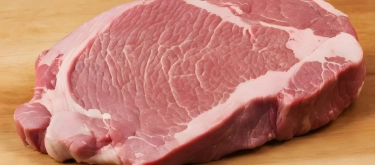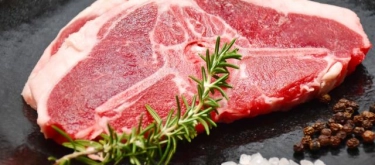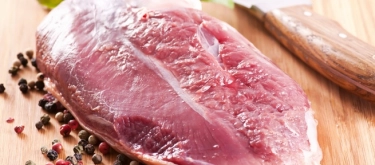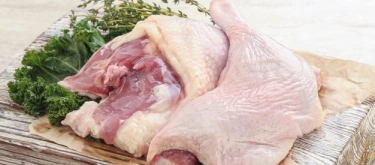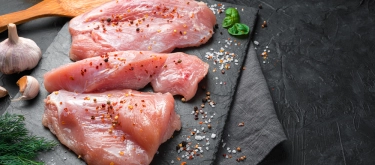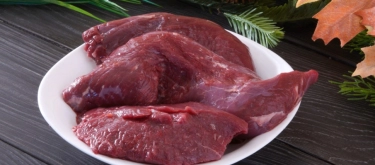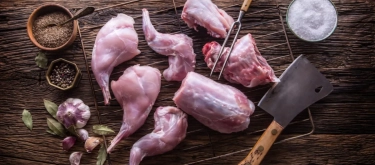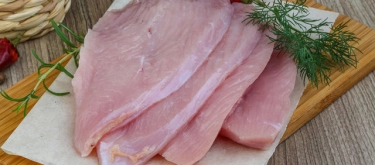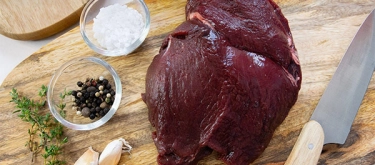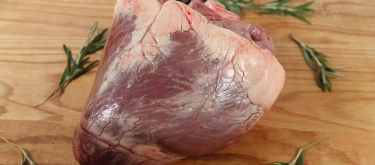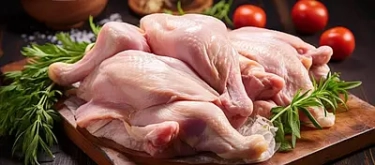Lamb: Taste Profile, Aroma, Benefits and Health Risks
Lamb, derived from young sheep under one year of age, holds a distinguished place in global gastronomy. Celebrated for its rich, distinctively savory taste and tender texture, lamb is deeply integrated into culinary traditions worldwide—from Mediterranean and Middle Eastern cuisines to the hearty dishes of Europe and Asia. Popular in various culinary contexts, from grilled chops to comforting stews, lamb continues to symbolize both festive and everyday dining across cultures.
Lamb is an animal-derived product unsuitable for vegetarians, vegans, or those avoiding red meat. While naturally gluten-free, it must be properly cooked to ensure safety from foodborne illness. Lamb contains animal proteins, rarely causing allergic reactions.
What does Lamb taste like?
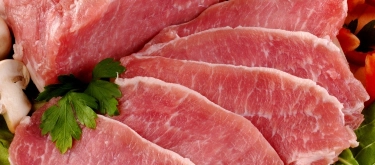
Complete Sensory Description
Taste:
Lamb presents a uniquely robust, savory, and subtly sweet flavor profile. Known for mild gaminess that deepens with age, young lamb typically exhibits delicate sweetness, subtle grassy notes, and rich umami. Older lamb (mutton) becomes stronger, more intense, and earthy.
Aroma:
Fresh lamb has a mild, grassy aroma. Upon cooking, it develops rich, roasted fragrances, distinct savory notes, gentle gaminess, and occasionally herbal nuances, making it irresistibly appetizing.
Texture:
Lamb’s texture is prized for its tender, juicy character and fine grain, particularly in prime cuts like loin, leg, and rib chops. Slower-cooked cuts, such as shoulder and shank, become meltingly tender with prolonged cooking.
Appearance:
High-quality lamb typically appears bright pink to deep red, often marbled with white fat. Cooked lamb acquires an attractive golden-brown crust and succulent pink to well-browned interiors, depending on preparation.
Varieties and Culinary Uses
-
Lamb Chops & Rack:
Tender, flavorful, excellent grilled, roasted, or pan-seared, paired simply with herbs, garlic, or spices. -
Lamb Leg & Shoulder:
Ideal for roasting, slow cooking, or braising—rich, flavorful cuts becoming tender and juicy when prepared properly. -
Lamb Shank:
Ideal for slow cooking, braising, stews, and dishes like Moroccan tagines or osso buco-style recipes. -
Ground Lamb:
Versatile for meatballs, burgers, kebabs, and Middle Eastern dishes, providing distinctive flavor.
In-depth Flavor Analysis
-
Mild Gaminess:
Lamb’s characteristic mildly gamey taste provides unique depth, balanced by its natural sweetness and grassy undertones, which are enhanced or mellowed by seasoning or marination. -
Fat and Flavor Influence:
Lamb’s fat significantly enhances flavor, tenderness, and juiciness, particularly evident in marbled cuts, with distinctively rich aromas when grilled, roasted, or braised. -
Cooking Influence on Flavor:
Lamb benefits from roasting, grilling, or braising methods, which intensify natural umami, caramelized notes, and create complex, savory flavors. -
Flavor Evolution:
Cooking transforms lamb from subtly sweet and grassy (when gently prepared) to intensely savory, caramelized, and tenderly delicious in slow-cooked preparations.
Culinary Applications
-
Roasting & Grilling:
Classic preparations include roasted lamb leg or grilled lamb chops seasoned with rosemary, garlic, and lemon. -
Stews & Braises:
Lamb shanks or shoulders shine in slow-cooked dishes such as Irish stew, tagines, or curries, developing tender textures and deep flavor. -
Middle Eastern & Mediterranean Cuisine:
Central to dishes like Greek lamb souvlaki, Lebanese kebabs, Turkish kebabs, and North African tagines, seasoned with regional spices and herbs. -
Ground Meat Dishes:
Used in dishes such as kofta, shepherd’s pie, kebabs, or stuffed pastries, offering richness, flavor, and versatility.
Selection and Storage
Selecting Quality Lamb:
- Choose fresh lamb with firm texture, pink to deep-red meat, creamy-white fat, and no unpleasant odors or discoloration.
- Prefer cuts with evenly distributed marbling to ensure tenderness and rich flavor.
Storage Recommendations:
- Refrigerate fresh lamb at temperatures below 4°C (39°F), consuming within 2–3 days.
- For longer storage, freeze lamb wrapped tightly; use frozen lamb within 6–12 months for optimal flavor.
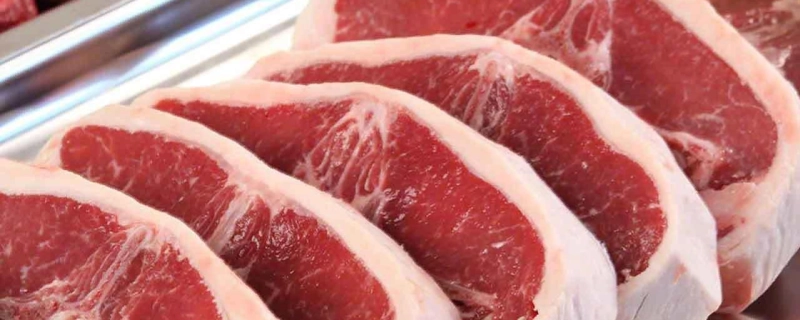
Nutritional Insights
-
Rich Source of Protein:
Lamb provides high-quality protein crucial for muscle growth, maintenance, and overall health. -
Vitamins and Minerals:
Rich in iron, zinc, vitamin B12, B6, selenium, phosphorus, and niacin—nutrients vital for metabolism, immune function, energy production, and neurological health. -
Healthy Fat Content (Moderation advised):
Lamb contains beneficial fatty acids, including conjugated linoleic acid (CLA), which may positively influence heart health when consumed moderately.
Expert Insights & Culinary Tips
-
Cooking Recommendations:
Chefs advise resting lamb (5–10 minutes) after cooking to enhance juiciness, tenderness, and flavor intensity. -
Flavor Pairings:
Pair lamb with robust herbs (rosemary, thyme, mint), garlic, citrus, red wine, olives, tomatoes, cumin, coriander, and aromatic spices for authentic flavor experiences. -
Marinating Benefits:
Marinating lamb in acidic marinades (lemon, yogurt, wine) improves tenderness, reduces gaminess, and enhances taste complexity.
Interesting and Curious Facts
- Lamb is historically significant, central to traditional cuisines from Europe and the Middle East, prominently featured in cultural dishes and celebrations (e.g., Easter lamb, Moroccan tagines).
- Lamb is particularly symbolic in culinary and cultural contexts, commonly representing purity, sacrifice, or celebration across many cultures and historical traditions.
- New Zealand, Australia, and the Mediterranean are prominent global producers renowned for high-quality lamb exports.
How to Enjoy Lamb
- Roast lamb leg seasoned with garlic and rosemary for succulent and flavorful meals.
- Grill lamb chops or kebabs with herbs, garlic, lemon, and spices for quick, tasty meals.
- Prepare slow-cooked lamb shanks or stews, paired with vegetables and aromatic spices, for comforting dishes.
- Experiment with lamb burgers, kofta, or meatballs for flavorful, internationally inspired meals.
Harm and Dietary Considerations
-
Fat & Cholesterol:
Certain lamb cuts, particularly fattier parts, contain higher saturated fat and cholesterol levels, necessitating moderation for heart-health management. -
Cooking Safety:
Lamb should be cooked thoroughly (recommended internal temperature minimum 63°C or 145°F for medium-rare) to avoid foodborne pathogens. -
Allergic Reactions:
While rare, lamb proteins may trigger allergic reactions in some sensitive individuals.
Final Thoughts & Sensory Journey
Lamb delivers a distinctly flavorful, richly satisfying culinary experience, renowned for its tenderness, subtle gaminess, and complex umami notes. A treasured meat in diverse culinary traditions worldwide, lamb elevates meals through its unique taste, versatility, and gourmet qualities, offering exceptional dining experiences reflecting cultural authenticity and culinary heritage.
Resources
- McGee, H. (2004). On Food and Cooking: The Science and Lore of the Kitchen. Scribner.
- USDA FoodData Central (2023). Lamb: Nutritional Profile, Storage, and Cooking Safety.
- Food and Agriculture Organization (FAO). (2021). Global Lamb Production and Culinary Traditions.

